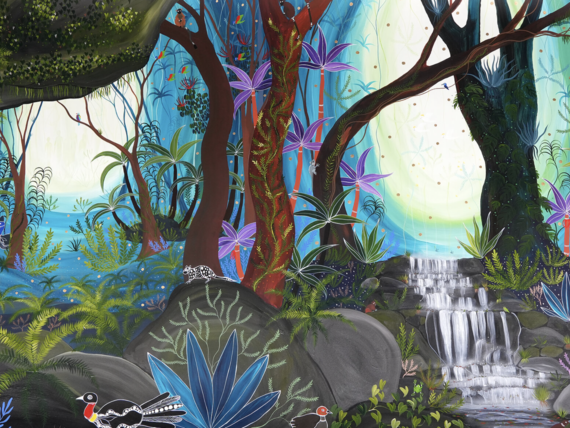Study shows Queensland cane toads have the biggest balls

New research into the reproductive traits of cane toads has found the Queenslanders have bigger testes than their interstate counterparts.
The testes of 241 adult males taken from sites in Far North Queensland, Byron Bay in New South Wales and Kununurra in Western Australia were measured by researchers whose findings have been published in scientific journal Biological Letters.
They discovered the Queensland cane toads had on average 30 per cent bigger testes than the others as a proportion of total body mass.

University of Sydney’s Professor Rick Shine theorises that the male toads in NSW and WA have evolved to disperse rather than breed.
“A pioneer cane toad, out at the edge of the invasion, is boldly going where no toad has gone before – and as a result, he isn’t likely to meet many other toads out there,” Professor Shine said.
“So, when it comes time to breed, he will probably be the only male in the pond when a female comes along.
“Because his sperm won’t have to compete with those of other males, the pioneer male can afford to invest a bit less in making sperm, and a bit more into travelling faster and farther, to stay at the invasion front.”
He said in sharp contrast, male toads in the settled territories of Queensland have plenty of breeding competition.
“Competition with the other boys is intense and there’s no benefit to extensive travel,” he said.
“A male in such a population produces a lot more sperm, to better win the sperm wars that erupt as a female lays her eggs.”
STOPPING TOADS IN THEIR TRACKS
Cane toads were introduced to Gordonvale in 1935 in an attempt to control the grey-backed cane beetle, but have since spread west and south, becoming a threat to native species such as monitor lizards and the northern quoll.
Dr Chris Friesen from the University of Wollongong, who was also involved in the study, said the toads’ ability to evolve quickly has enabled them to adapt and travel into non-traditional habitat areas.
He said the findings could lead to new ways to control and even eradicate cane toad populations.
“It helps us understand what kind of conditions they require in order to reproduce,” he said.
“Reproduction is where the rubber meets the road in terms of evolution and also just population stability so if you can somehow interfere with their ability to reproduce, that can have huge impacts on cane toad populations.”








